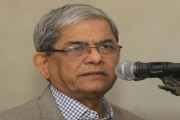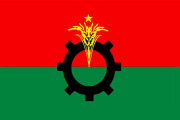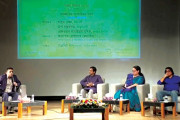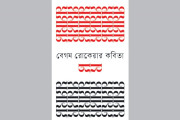The British administration publicized the claim that they needed to partition the Bengal presidency due to ruling over its huge area smoothly. Calcutta being the capital city of the Bengal got the priority from the British.
।। Alaul Alam।।
The history of modern Bengal echoes that nationalism and communalism are two sides of a coin. The spirit of nationalism became threatened in the wake of communalism. The first partition of Bengal in 1905 was proved momentous for bringing the spirit of communalism amid the people of this subcontinent. Though the partition of Bengal was effected in 1905, the plan to divide the Bengal was recommended by many British high officials years ago.
The British administration publicized the claim that they needed to partition the Bengal presidency due to ruling over its huge area smoothly. Calcutta being the capital city of the Bengal got the priority from the British. All the developments centred round Calcutta and its adjacent districts. On the other hand, the eastern part of Bengal was neglected because of isolation and poor communication. The inhabitants of eastern Bengal endured discrimination in case of getting state facilities. In most cases, they hardly had scopes to maintain livelihoods in a decent way. They were illiterate peasants undergoing inequalities throughout their life.
The British government claimed that their decision to divide the Bengal presidency was merely for conforming good governance as the area of Bengal was too large to rule over combined. They called it administrative settlement. But political analysts opined differently to the issue of Bengal partition. The historians witnessed that behind dividing Bengal the British had political intention.
Many claim that the ‘divide and rule’ policy adopted by the British was to weaken the nationalist spirit of the people of the Bengal. They made the plan that if they were able to disunite people in the name of religion, they would no more cherish nationalist spirit at their heart and the British would have every control to rule over the people in this subcontinent throughout the ages.
Obviously, the form of the Indian National Congress in 1885 was not a good experience to the British government. They were clearly aware of the activities of the Congress and realized that it would instigate national feelings that would make the people rebellious against the British rule in India. The Congress had been an institution which began talking in favour of the people. Though it was alleged that elite class Hindus led the congress and the rights of the people of the eastern part were not concentrated as seriously as those of the western.
In 1898 Lord Curzon took the charge as the Viceroy in British India and made his recommendations why this British India should be partitioned. However, when the notice of partitioning the Bengal was brought to light, there was an unprecedented opposition among the Hindus who were having every facility from the British government living in Calcutta and its adjacent districts.
Obviously, at the initial stage, Muslims also made a protest against the decision of the British government. However, in a bid to assess the public opinion in regard to the government proposal, Mr Curzon made a tour to the districts of eastern Bengal and encouraged the Muslims saying that if the plan was executed, the people of the eastern region would enjoy the privileges of the state much more than they had previously.
With considering this, Nawab Salimullah along with other representatives of the eastern part of Bengal supported the scheme of the British. Contrarily, the protest of the Hindus deepened gradually and most of them became worried least they should lose political, economic and other opportunities if the focus of the British would go to Dhaka instead of Calcutta. The Hindus were involved themselves in ‘Swadeshi Andolon’ and pressurized the government to withdraw the decision of partitioning the Bengal.
It was claimed that the leaders of the Swadeshi Andolon were going against the partition of Bengal to uphold the unity and interests of the people of the Subcontinent. Critics did not think so. In many cases they claimed that the Hindus were combating the government’s decision thinking their own interests. When they saw that the Muslims were not in the support of Swadeshi Andolon, they showed their hatred to Muslims and others who did not join the movement to uniting Bengal presidency. Hindu-Muslim disunity was sighted noticeably as Muslims supported and Hindus opposed the decision of partitioning the Bengal. In the guise of Swadeshi Andolon many Hindus participated in the terrorist activities.
It is frustrating that the nationalist movement very soon turned into communal movement. Hatred grew between two religious minded communities. Muslim and Hindu communities in India turned foes of one another and they were no more united, rather they were counting their communal interests, leaving the nationalist interests.
Again, the Muslim leaders well understood that the Congress would not serve the purposes of Muslims, rather they would be depriving as long as they stayed with the Congress as communal attitudes were so pervasive between the Muslims and Hindus. Again, there was propaganda that the partition of Bengal would benefit the Muslims that caused communal violence. A number of communal violence broke out in eastern Bengal in the period following the Swadeshi movement.
Nawab Salimullah and other Muslim leaders took the initiatives to form Muslim league to protect the rights of the Muslims in the Subcontinent. The new organization ‘Muslim League’ was formed in 1906. On top of that, the separate election for the Muslims in 1909 by the Morley-Minto reforms was another landmark in the history of communalism in the Bengal.
The separate elections with separate representatives hinted that nationalist interest could not ignite the people, rather communal interest got much importance which led to the uncertain future of the Bengal. Two political organizations stood against one another and the subcontinent faced threats at their hands, thus ultimately the British were taking the scopes from ill-going between the two major communities in this region.
However, with huge uprising and terrorist activities of the Hindus the British government made a declaration to reunite the Bengal in 1911. Though the Bengal was reunited, the segregated mind of the people in terms of religion was not reunited again. Many Muslim and Hindu representatives from Congress and Muslim league tried to make the nation reunited for the essence of nationalism but the initiatives ended in smoke. In 1940, the Lahore Resolution was the most crucial and decisive phase of communalism in the Bengal.
The demand for a separate state for the Muslims was obvious. In 1947 merely based on religion two countries, India and Pakistan were born. It is apparent that the British was successful in their mission to spread the communal spirit in the Indian subcontinent and the people of this subcontinent is still undergoing the legacy of communal essence through the ages.
The writer teaches at Prime University. He is also a research scholar at the IBS. Email: malaulalam@gmail.com










































































































































































